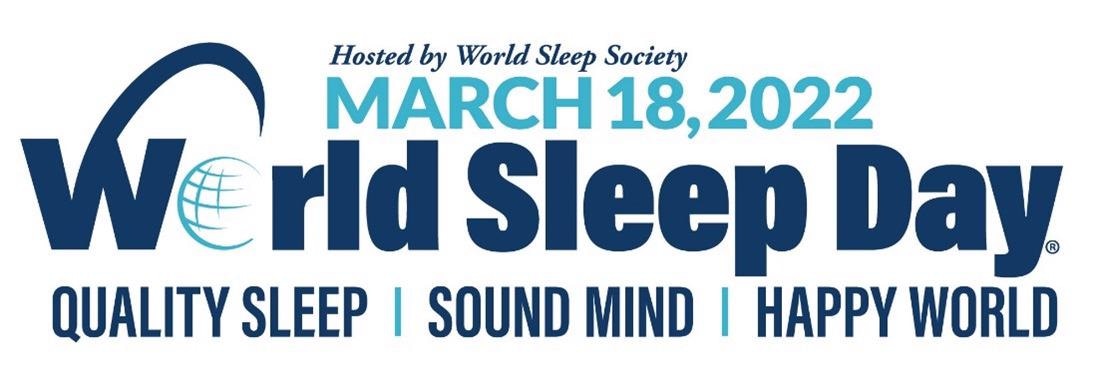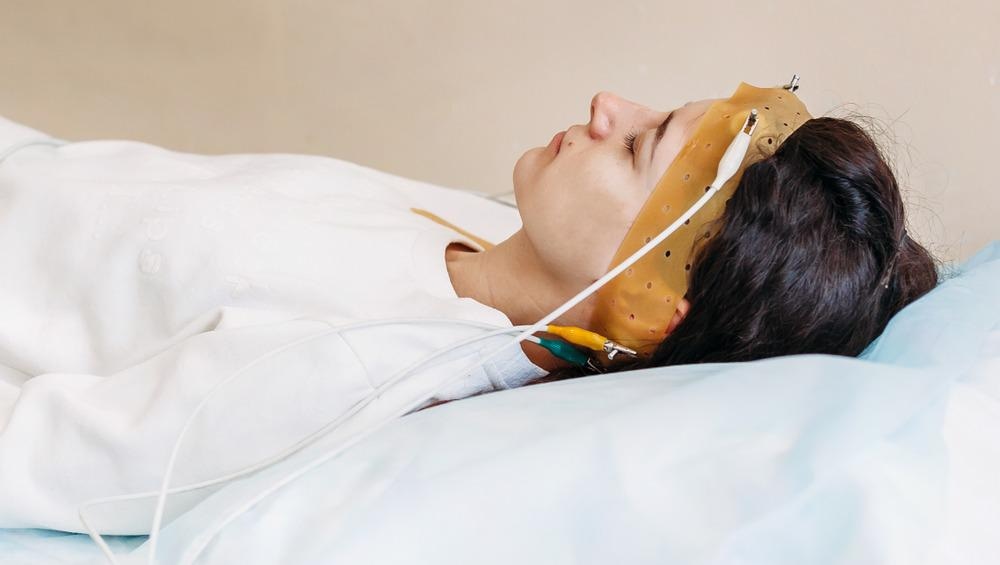
Image Credit: World Sleep Society
Sleep is vital and allows the body to remain healthy. Studies have shown that sleep deprivation is linked with and may be a causative factor of anxiety and depression. Research has also linked chronic sleep deprivation with several physical diseases, including cardiovascular disease, type 2 diabetes, and obesity. Therefore, it is important to raise awareness of the impact of healthy sleep and foster a society where prevention and management of sleep are better understood.
World Sleep Day is an annual event that aims to reduce the burden of sleep problems and encourage better prevention and management strategies. It raises key issues in the field, such as those relating to medication and education, as well as social aspects of sleep.
How Have Scientists Studied Sleep Over the Years?
Sleep and fluctuating temperatures
The study of sleep began with British doctor John Davy’s 1845 studies of the connection between sleep and the body’s fluctuating temperatures.
Narcolepsy
Following this, French neuropsychiatrist Gelineau was the first to describe a sleep disorder with his recognition of narcolepsy in 1880.
Sleep and the link to health issues
The interest in sleep research continued and was further enabled with the publishing of the book The Physiological Problem of Sleep written by French researcher, Henri Pieron, in 1913. The publishing of this book represents a time when, for the first time, sleep and rest were considered health issues.
Sleep research methods
In 1924, German psychiatrist Hans Berger became the first to measure electroencephalogram (EEG) wave patterns to investigate sleep, a method that is still used today.

Image Credit: NPS_87/Shutterstock.com
Initially, sleep experiments were fairly basic as technology to measure any facets of sleep had yet to be invented.
Some key moments include:
- 1953 - The discovery of rapid eye movement (REM) sleep
- 1955 - The first documentation of sleep cycles
- 1958 - The discovery of melatonin and its role in regulating sleep
- 1970 - The founding of the world’s first sleep laboratory at Stanford University
- 1975 - The founding of The Association of Sleep Disorders Centers
- 1975 - The development of the multiple sleep latency test to diagnose sleep disorders
- 1979 - The invention of the continuous positive airway pressure (CPAP) system to treat sleep apnea
- 1990 - The invention of functional magnetic resonance imaging (fMRI), which has since been used in sleep studies, often alongside EEG.
Challenges of Studying Sleep
Sleep studies face numerous challenges, mainly because people cannot sleep normally within a laboratory setting, particularly when imaging equipment is being used. For example, while fMRI offers an important opportunity to view brain activity in real-time while the patient sleeps, it requires the person sleeping within an fMRI machine, which is noisy and enclosed. This has limited the use and success of such imaging methods in sleep studies. Often, scientists have resorted to depriving participants of sleep to ensure that they sleep while in the machine, which presents further problems in that it is not normal sleep being observed.
Why Do We Study Sleep?
As discussed above, studies have found a connection between the quality of sleep and a wide range of other mental and physical illnesses.
While disease can impact sleep, often reducing the quality of sleep while the person is unwell, a growing number of studies are finding evidence that the relationship may be bidirectional - that poor sleep can also lead to disease rather than simply be caused by it. This is unsurprising given the restorative nature of sleep.
To understand more about how poor sleep can give rise to illness, as well as how it impacts recovery and is influenced by illness, we need accurate methods that allow us to study sleep.
The Use of Optics in Sleep Studies and What We Have Learned
Optics presents an important opportunity for sleep research as it offers a way of investigating sleep without some of the limitations and challenges related to other methods.
Noninvasive sleep apnea syndrome (SAS) is commonly diagnosed via an uncomfortable polysomnography (PSG) test. However, scientists recently developed a non-invasive alternative using optical fibers, the F-SAS sensor. Tests have shown that the optical sensor technology is quiet and compact as well as non-invasive and non-restrictive, allowing potential SAS sufferers to be screened at home.
Many research projects are currently underway to develop novel optical tools to study sleep. One area that has gained particular interest is the use of optical tools in investigating the function of neuronal circuits in vivo.
Studies have shown that genetically encoded fluorescent indicators are a plausible tool for sleep research as they allow for continuous recording of neuronal activity across sleep stages. Dual-color dyes have also gained much interest as they can help generate a more balanced analysis of imaging data as well as help to produce simultaneous visualization of neuronal structure and function.
In the coming years, we will likely see important breakthroughs emerge from studies into the use of optics in sleep studies. Hopefully, it will help researchers understand how to better prevent, diagnose, and treat mental and physical illnesses.
References and Further Reading
Mitachi, S., Satoh, K., Shimoyama, K., Satoh, M. and Sugiyama, T., 2020. Optical Fiber-Based Sleep Apnea Syndrome Sensor. Dysfunction of Olfactory System. https://www.intechopen.com/chapters/71249
Moehlman, T., de Zwart, J., Chappel-Farley, M., Liu, X., McClain, I., Chang, C., Mandelkow, H., Özbay, P., Johnson, N., Bieber, R., Fernandez, K., King, K., Zalewski, C., Brewer, C., van Gelderen, P., Duyn, J. and Picchioni, D., 2019. All-night functional magnetic resonance imaging sleep studies. Journal of Neuroscience Methods, 316, pp.83-98. https://pubmed.ncbi.nlm.nih.gov/30243817/
Sigl-Glöckner, J. and Seibt, J., 2019. Peeking into the sleeping brain: Using in vivo imaging in rodents to understand the relationship between sleep and cognition. Journal of Neuroscience Methods, 316, pp.71-82. https://dx.doi.org/10.1016%2Fj.jneumeth.2018.09.011
Sleep and Chronic Disease. [Online]. CDC. Available at: https://www.cdc.gov/sleep/about_sleep/chronic_disease.html [Accessed March 2022]
Disclaimer: The views expressed here are those of the author expressed in their private capacity and do not necessarily represent the views of AZoM.com Limited T/A AZoNetwork the owner and operator of this website. This disclaimer forms part of the Terms and conditions of use of this website.